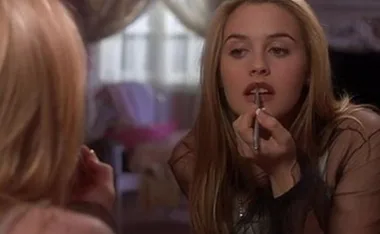Like many fiftysomethings, Patricia had noticed the hair on top of her head began gradually getting thin and sparse as she went through menopause. Although she tried keeping her curls short in an attempt to conceal her hair loss, nothing worked – until she met Dr Russell Knudsen, a Sydney-based hair-restoration surgeon who eventually recommended she have a hair transplant.
“Women can lose their hair for a variety of reasons, which is why it’s important to understand the root cause of the problem before you treat it,” Dr Knudsen explains.
“Talk to someone who treats hair loss for a living, such as a hair-restoration surgeon or dermatologist, and get a thorough assessment and customised treatment plan.”
What constitutes normal hair loss?
Losing some hair every day is normal. It’s a sign that your body is replacing old hairs with new ones. “The average shedding rate is between 50 and 100 hairs a day, but it tends to be more noticeable in women who wear their hair long,” Dr Knudsen says.
There are three stages of hair growth. First is the anagen (growing) phase, typically lasting three to five years; next is the catagen (transition) phase, lasting up to two weeks; and finally, the telogen (shedding) phase is when old hairs fall out to make way for new ones, lasting up to four months.
As you get older, the growing phase shortens, which means your hair may start shedding faster, making it appear thinner and shorter. A decrease in oil production on the scalp can also result in much drier hair, increasing the likelihood of breakage due to heat styling and bleaching.
“Several other factors can increase the rate of shedding, so if you notice scalp redness, flaking, tenderness, burning or itching, talk to your doctor because it could be related to an inflammatory response,” Dr Knudsen suggests.
FACT: 80% of women will have some degree of hair loss by the time they reach the age of 60, according to the Australian Institute of Hair Restoration.
Find the root cause of your hair loss problem
Hormone imbalances, thyroid disorders, skin conditions, certain medications, stress and crash dieting can all lead to temporary shedding (telogen effluvium). But having a family history of female or male pattern hair loss (genetic androgenetic alopecia) increases your risk of permanent thinning.
“Being deficient in minerals such as iron and zinc, as well as vitamins B, D and H can also affect hair health,” Dr Knudsen says. Then there’s alopecia areata, an autoimmune condition that causes permanent scarring of the scalp, destroying the hair follicles.
This causes clumps of hair to fall out, resulting in bald patches. In Patricia’s case, she experienced two forms of hair thinning – the irreversible female pattern baldness and stress-related shedding, which temporarily increased her hair loss.

Get a diagnosis
Your GP should be your first port of call. They will ask about when you first noticed the thinning, look at the pattern of your hair loss and examine your scalp.
A hair sample or scalp biopsy may be taken to diagnose skin disorders and specific conditions, such as an overactive or underactive thyroid.
“Sometimes hair loss is associated with psoriasis, dermatitis, dandruff or mild fungal infections, which can lead to scarring,” says Dr Knudsen. “If there’s scarring, it will invariably be related to an underlying problem that may lead to permanent hair loss. However, if the skin’s normal but the hair quality has deteriorated, it’s most likely related to external factors, such as chemicals or heat.”
If the diagnosis is still unclear, your doctor may refer you to see a specialist for further testing. In general, female pattern hair loss is determined by ruling out a host of other causes first.
Patricia consulted a dermatologist, who recommended that she see a hair-restoration surgeon for further treatment as the best course of action.
WHAT IS FEMALE PATTERN BALDNESS?
Female pattern hair loss occurs when there’s a change in hormones – often during menopause – which causes the hair follicles to shrink. This results in a gradual thinning of hair at the crown. Unlike male pattern baldness, it doesn’t cause hairline recession.
Decide on the right treatment for you
The three principle aims of treatment are to prevent future thinning, stimulate regrowth and conceal hair loss.
“Prescription medications that block the effect of hormones responsible for hair loss can halt further progression and may stimulate regrowth,” says Dr Knudsen. “Likewise, over-the-counter lotions and shampoos can boost regrowth and encourage stronger, sturdier stands.”
With iron deficiencies, hormone imbalances and skin infections, Dr Knudsen says once you treat the underlying cause – especially if combined with a stimulating scalp tonic to promote healthy blood flow to the follicles – the problem usually resolves and hair grows back.
Female pattern hair loss is a bit trickier to resolve. “The sooner you start treatment, the better your results will be. But once you start using medications and lotions, you’ll have
to use them for the rest of your life,” he warns.
Consider surgical options
For extreme cases, hair transplant surgery is likely to produce better, longer-lasting results.
Patricia was a perfect candidate for surgery because her thinning was confined to the top and front of her scalp. “During a typical transplant procedure, hair is moved from the back or side of your head to the front or top of your scalp. It then grows back gradually but can take up to 12 months to be fully restored,” Dr Knudsen adds.
While surgery can produce excellent results, he says it’s usually done in conjunction with long-term use of oral and topical medication because hair loss is a progressive condition. As Patricia kept her restoration surgery a secret, she was pleased the results were gradual. “Having a hair transplant has exceeded my expectations,” she says.
“I’ve got my confidence back and I feel much better in myself.”










